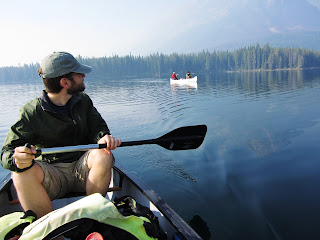The burners are ignited and that’s when the magic starts. Hot pulses of air blast into the supine balloons changing their hummocky exteriors into taut teardrop-shaped globes. Finally, ever so gently, each balloon uprights to its full vertical stature and ten individuals are loaded, like so many chocolate Easter bunnies, into each empty basket below.
Objects of reference on the ground begin to fall away and shrink as the buoyant balloon rises into the air. A surreal sense of stillness abounds, made all the more palpable by the contrast of occasional combustive bursts from the burner. Everyone is transfixed by the beauty of the topography below, and by the rare opportunity to experience a sweeping aerial view of the world unencumbered by glass.
The air is cold and still, not even a hint of breeze. We fly parallel to the Rio Grande and see a flock of Sandhill cranes wading below, their long dark shadows cast across the flat surface of the river. The late autumn trees glow like golden torches in the morning light, sharply contrasting with the elongated strands of shade that darken the ground at their feet.
We drift south of the river over the intermingled neighborhoods and fields of Albuquerque. Densely packed developments of pueblo-style homes create a harmonious mosaic of rectangles. Large tree ringed farm plots are dotted with a variety of structures – houses, outbuildings, fences, fountains, pools, ponds, gazebos, orchards, gardens and paths. Each property a sprawling testament to the lives, occupations, and histories of the generations that have resided there. In that moment, a multitude of scattered dog barks filter up unhindered through the air to join in a morning chorus punctuated by the occasional rooster's call.
As the balloon slowly descends back to the ground, it passes over a mining operation. The juxtaposed gentle curves and stick straight lines make for a mesmerizing composition. Miniature dump trucks glide lazily around the sculpted piles of gravel and sand, shaping and reshaping a landscape created by an infinite accumulation of energy - eons of geologic deposition and centuries of human innovation. I cannot get the word ‘industrious’ out of my mind.
And then I am reminded of a quote I read recently, one which I could not understand fully until this moment, "It is from the air that the true relationship between the natural and the human landscape is first clearly revealed. The peaks and canyons lose much of their impressiveness when seen from above. What catches our eye and arouses our interest is not the sandy washes and the naked rocks, but the evidences of man." – J.B. Jackson
I marvel at all the ways across generations that the landscape has shaped us, and how we have shaped it in return.

























































